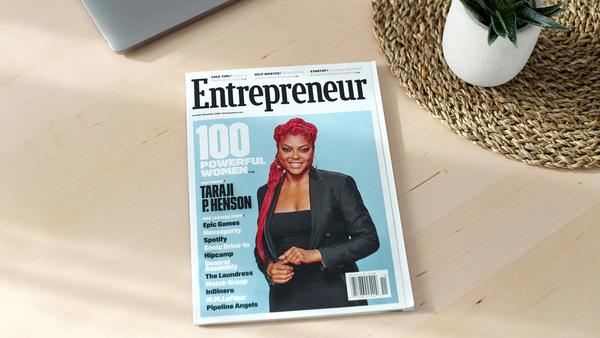Old State, New State, Red State, Blue State
What's changed since 2016?
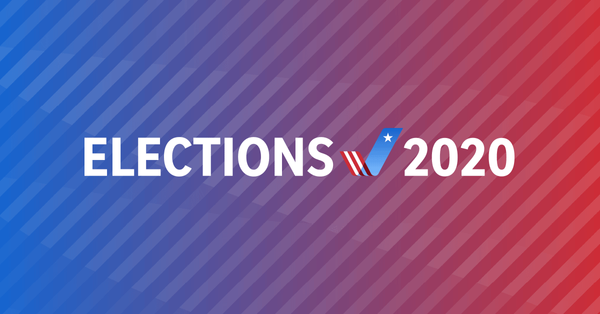
Now that we’re past the presidential election, instead of a brief newsletter, we’re going to provide an election-focused analysis in two parts: The first is an analysis of interstate migration and election results, where we show that the origins of people moving between states is a strong predictor of how the electoral map has changed since 2016. The second is a workforce composition comparison between red states and blue states, where we show how states differ from each other and how these differences have evolved over the last 4 years.
Part 1: Old State, New State
In the months leading up to the 2020 presidential election, pollsters and pundits have tried to make sense of how the electoral map would shift from the 2016 election. Of course, states are just collections of people, and those people don’t necessarily stay put. To address this, we take a look at where people are moving from, and see if the political leanings of the source state is a strong predictor of how the destination state changes.
Based on career transitions provided by Revelio Labs HR data analytics, we can see all of the people that moved states. Georgia, which has gotten bluer since 2016, has been welcoming new migrants from Florida (12%), New York (8%), and California (7%). Ohio, which has gotten redder since 2016, has opened its doors to new faces from Kentucky (13%), Pennsylvania (7%), and Michigan (6%). We then take the share of each source state that voted for President Trump in 2016 and use it to summarize the average political leaning of new migrants.
By measuring the political leanings of states that new migrants have moved from, we see a promising correlation (+.33) to how the election results have shifted from 2016 to 2020.


We think this is interesting for several reasons:
- For one, it shows how political ideology can travel between state lines. As siloed as many states may seem, the constant mobility of workers moving from state to state can be a powerful contributor to the spread of ideas.
- Inversely, this could work the other way too - perhaps people move to states that are shifting toward their ideological comfort-zone. For example, Arizona’s move to the left has attracted new migrants from California.
- Lastly, this pattern illustrates a long-term trend toward the mean. As much as we hear about a growing partisan divide, it’s important to remember that the melting pot of ideas that come from each new set of migrants continues to push ideology toward the center.
Part 2: Red State, Blue State
Our new President-elect, Joe Biden, in his most recent address to the country said that he doesn’t see “red states and blue states, only the United States”. While we applaud the sentiment, we want to take one last opportunity, before inauguration, to shine a light on some of the differences between red states and blue states.
The labor market has gone through some pretty interesting changes in the last four years, but the workforces of red states and blue states have sometimes changed in different ways. To explore these differing trends, we take a look at the changing workforce composition between red states and blue states by three employee segments: job category, gender, and ethnicity.
Job Category:
Below we look at how the shares of employees in each job category differ between red states and blue states. We see that Technicians and Administrative roles are much more common in red states, while Marketing and Engineering jobs are much more common in blue states.

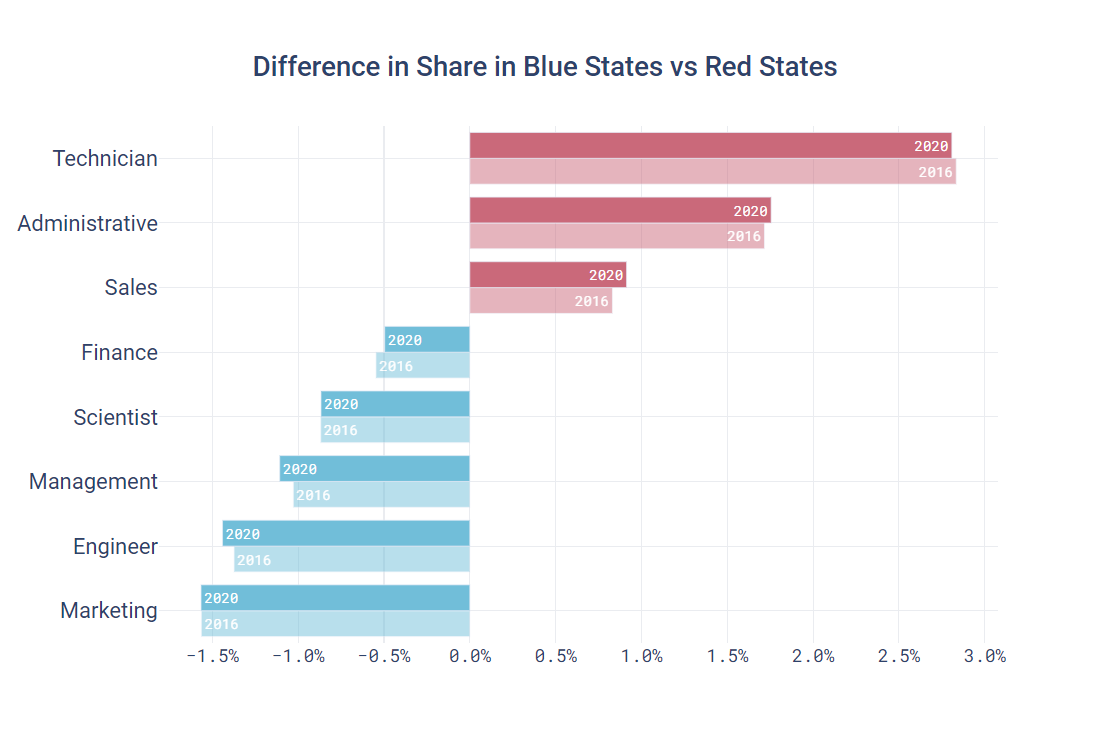
These differences are likely due to the urban/rural divide between red and blue states, with knowledge work being more heavily concentrated in urban areas. What we really want to dig into is the changes between 2016 and 2020, and how those differ between red states and blue states. If we just look at the gaps between the two lines above, we can see how these changes have differed quite a lot between the different sets of states.

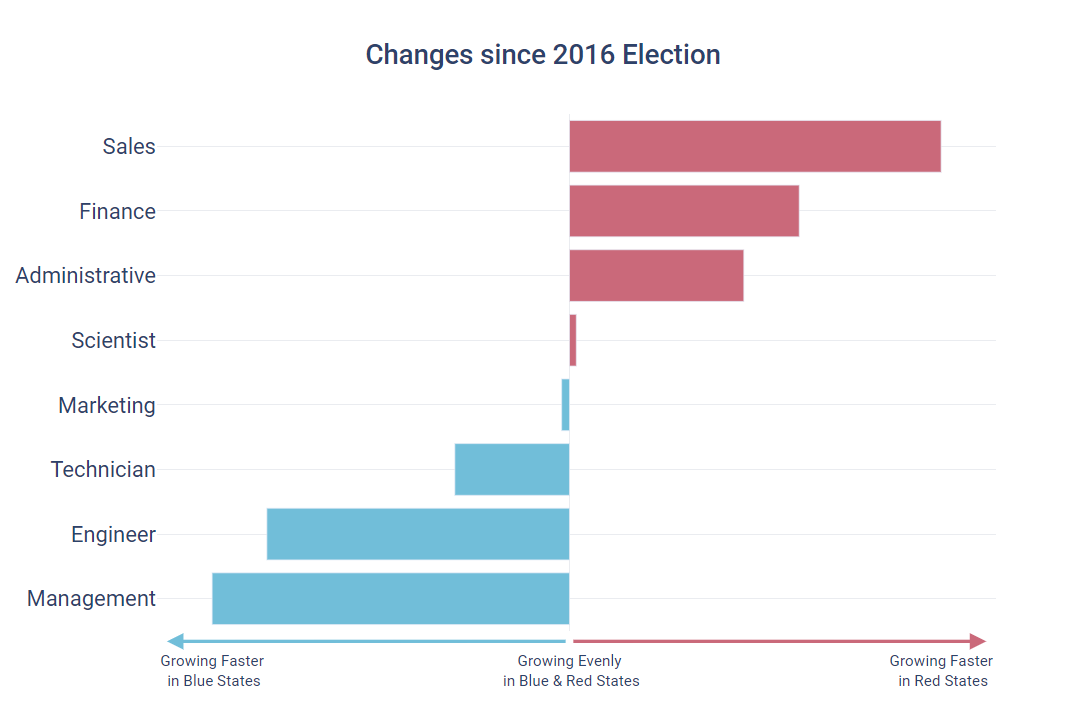
It looks like red states have grown more than blue states in sales and finance roles, where blue states have grown more than red states in management and engineering roles.
Sign up for our newsletter
Our weekly data driven newsletter provides in-depth analysis of workforce trends and news, delivered straight to your inbox!
Gender:
Red states have a larger share of their workforce than blue states represented by women, Revelio HR data analytics show.

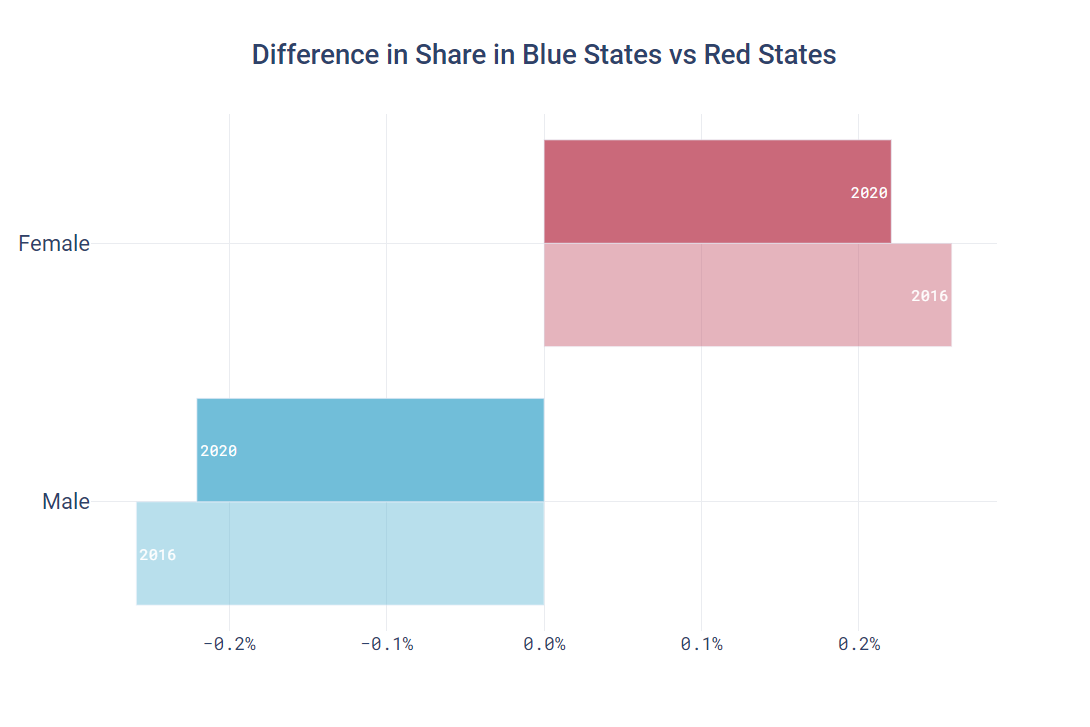
Interestingly, that trend has reversed, as more women have begun working in blue states than red states since 2016.

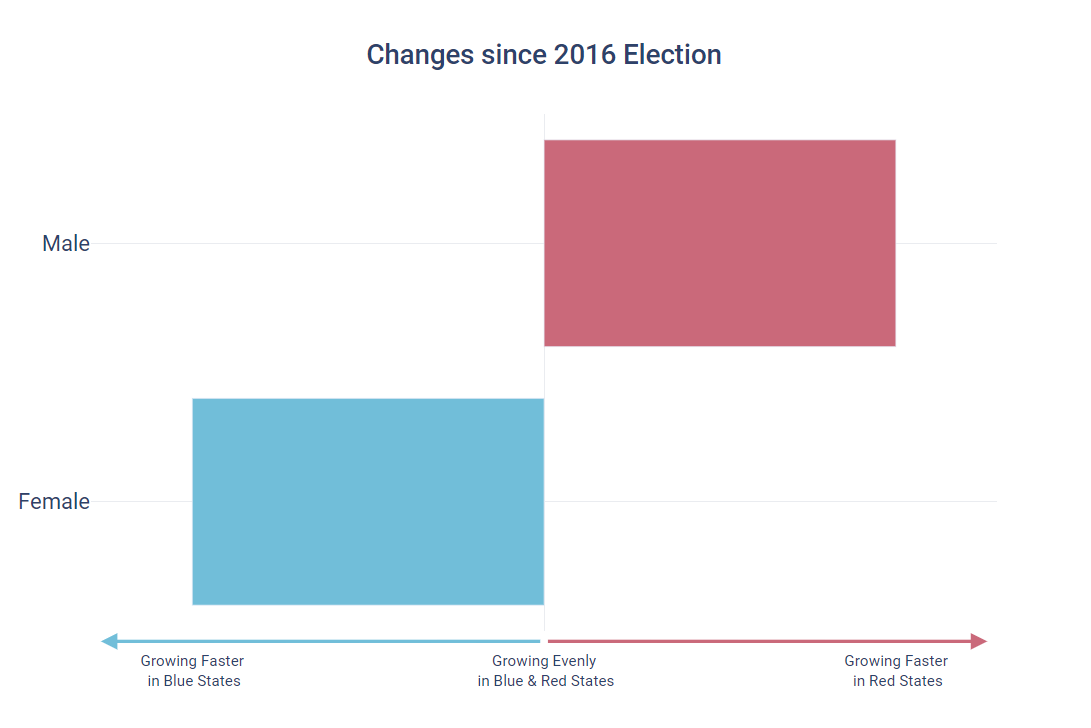
Ethnicity:
The demographic differences between red and blue states is quite stark, with black and white Americans living more in red states, while asian and hispanic Americans live more in blue states.

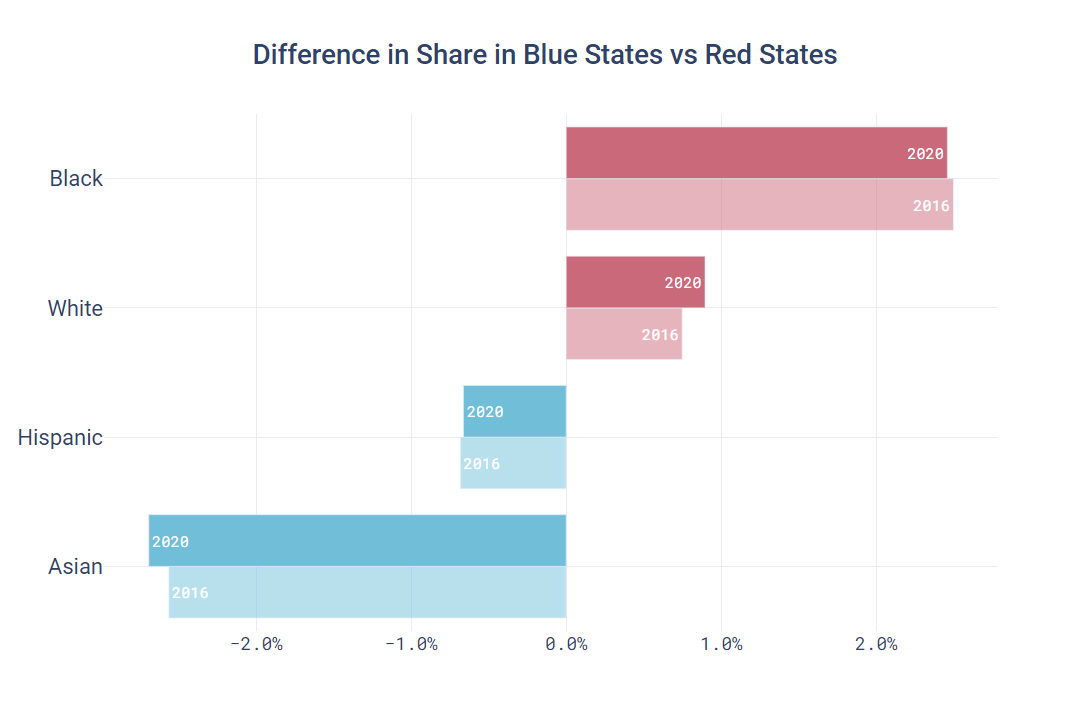
Very much in line with the election outcomes, we see that white and hispanic voters have grown their concentration in red states, while asian and black voters have grown their concentration in blue states.

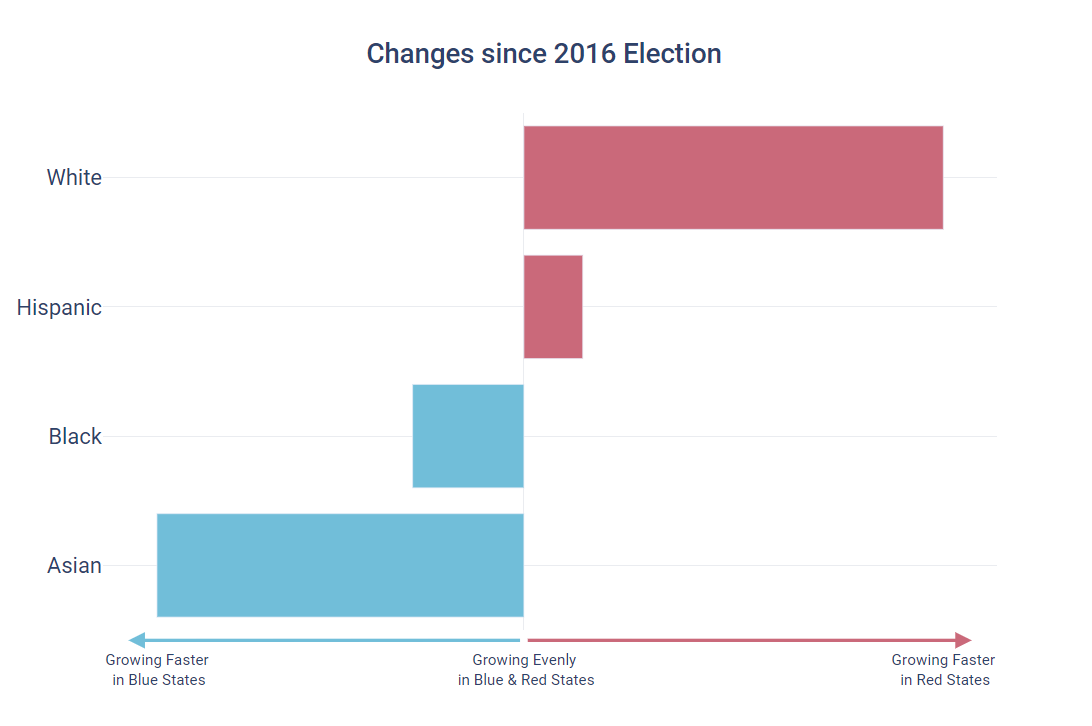
A few trends jumped out to us as particularly interesting:
- Even in periods as short as four years, workforce compositions can go through significant changes that can have real, identifiable effects on elections.
- While much of the growth in blue states has focused on technology, the growth of sales roles in red states may be attributable to the “dealmaker” ethos of the last four years.
- The demographic groups that have diverged the most in the past four years were white men in red states, and asian women in blue states -- a fun coincidence given that the VP of the democratic ticket is the first asian woman to hold that office.
If you have any ideas of other metrics to track or would like to hear more about Revelio Labs, please feel free to reach out.

